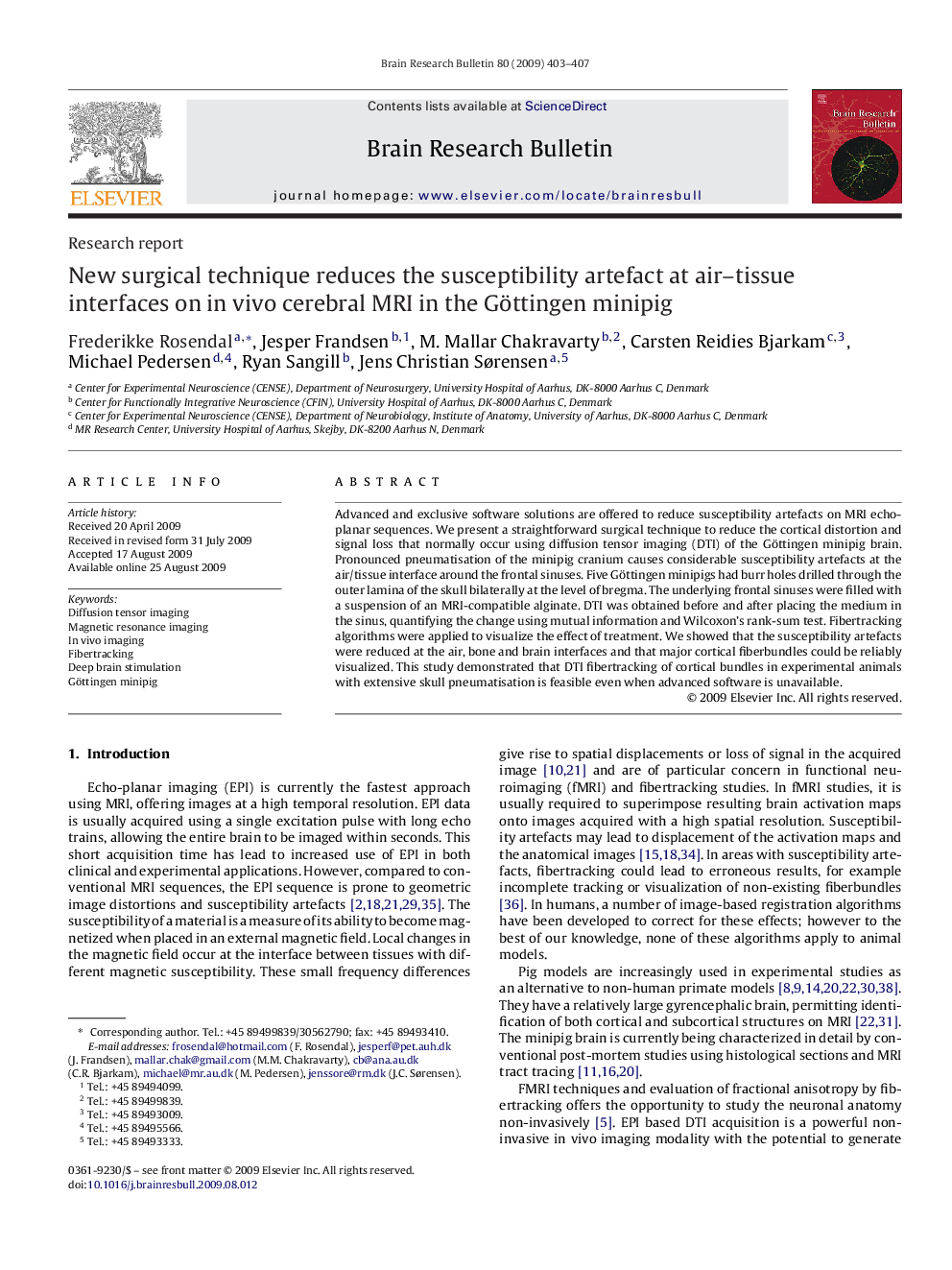| Article ID | Journal | Published Year | Pages | File Type |
|---|---|---|---|---|
| 4319193 | Brain Research Bulletin | 2009 | 5 Pages |
Advanced and exclusive software solutions are offered to reduce susceptibility artefacts on MRI echo-planar sequences. We present a straightforward surgical technique to reduce the cortical distortion and signal loss that normally occur using diffusion tensor imaging (DTI) of the Göttingen minipig brain. Pronounced pneumatisation of the minipig cranium causes considerable susceptibility artefacts at the air/tissue interface around the frontal sinuses. Five Göttingen minipigs had burr holes drilled through the outer lamina of the skull bilaterally at the level of bregma. The underlying frontal sinuses were filled with a suspension of an MRI-compatible alginate. DTI was obtained before and after placing the medium in the sinus, quantifying the change using mutual information and Wilcoxon's rank-sum test. Fibertracking algorithms were applied to visualize the effect of treatment. We showed that the susceptibility artefacts were reduced at the air, bone and brain interfaces and that major cortical fiberbundles could be reliably visualized. This study demonstrated that DTI fibertracking of cortical bundles in experimental animals with extensive skull pneumatisation is feasible even when advanced software is unavailable.
